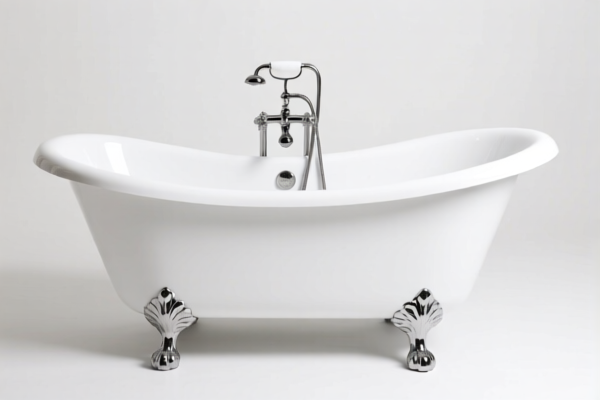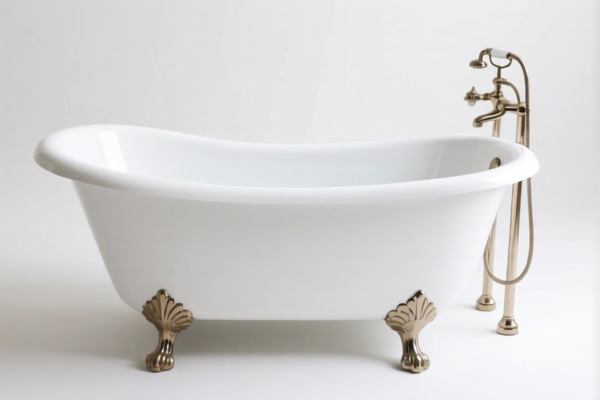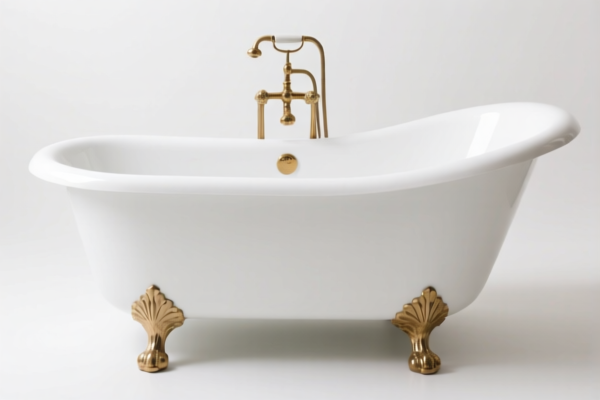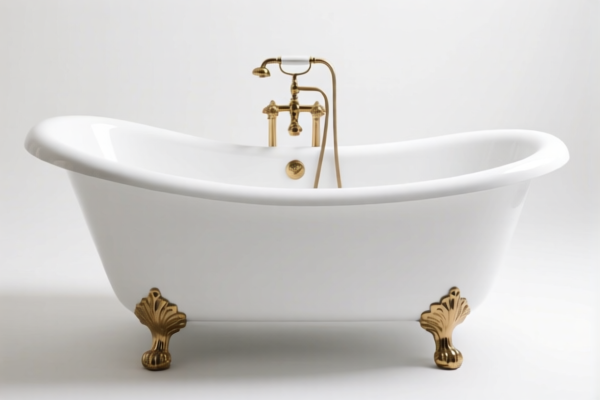| HS Code | Official Doc | Tariff Rate | Origin | Destination | Effective Date |
|---|---|---|---|---|---|
| 7418201000 | Doc | 58.0% | CN | US | 2025-05-12 |
| 7418205000 | Doc | 58.0% | CN | US | 2025-05-12 |
| 7419200010 | Doc | 55.0% | CN | US | 2025-05-12 |
| 7419805010 | Doc | 55.0% | CN | US | 2025-05-12 |
| 6910900000 | Doc | 43.2% | CN | US | 2025-05-12 |
| 6910100050 | Doc | 35.8% | CN | US | 2025-05-12 |




Bath Tap
A bath tap, also known as a bath faucet, is a plumbing fixture used to control the flow of water into a bathtub, regulating both temperature and volume.
Material
Bath taps are manufactured from a variety of materials, each offering different aesthetics and durability characteristics:
- Brass: A common material, known for its durability, corrosion resistance, and ability to be plated with various finishes. Often used as the base material.
- Chrome: A popular finish applied to brass, providing a shiny, reflective surface that is relatively easy to clean.
- Nickel: Offers a warmer tone than chrome and is also corrosion resistant. Brushed nickel is a common finish.
- Stainless Steel: Highly durable and corrosion resistant, often with a modern aesthetic.
- Bronze: Provides a classic or rustic look, often requiring polishing to maintain its appearance.
- Ceramic: Used for valve components, offering excellent wear resistance and control.
- Plastic: Found in less expensive models, or for specific components like levers and spouts.
Purpose
The primary purpose of a bath tap is to fill a bathtub with water at a desired temperature and flow rate for bathing.
Function
Bath taps function through a combination of mechanisms to control water flow and temperature:
- Valve Control: Valves regulate the amount of hot and cold water mixed. Common valve types include:
- Compression Valves: Older style, using rubber washers to seal and control flow. Prone to drips.
- Ceramic Disc Valves: Modern, highly durable, and provide precise temperature control.
- Ball Valves: Use a ball with ports to control flow, offering smooth operation.
- Cartridge Valves: Use a cartridge to control flow and temperature, common in modern taps.
- Spout: Directs the water flow into the bathtub.
- Handles/Levers: Used to operate the valves and control water temperature and flow.
Usage Scenarios
- Residential Bathrooms: The most common application, used in conjunction with bathtubs for personal hygiene and relaxation.
- Hotel Bathrooms: Standard fixture in hotel rooms.
- Spa and Wellness Centers: Used in specialized bathtubs for therapeutic bathing.
Common Types
- Two-Handle Taps: Separate handles for hot and cold water, offering precise temperature control but requiring more adjustment.
- Single-Handle Taps: A single handle controls both temperature and flow, offering convenience but potentially less precise control.
- Wall-Mounted Taps: Installed on the wall, freeing up space around the bathtub.
- Freestanding Taps: Stand independently of the bathtub, offering a luxurious aesthetic.
- Roman Taps: Designed to fill a bathtub from a significant height, often used with freestanding tubs.
- Thermostatic Taps: Maintain a consistent water temperature regardless of pressure fluctuations.
- Mixer Taps: Combine hot and cold water before delivering it to the spout, simplifying temperature control.
- Waterfall Taps: Feature a broad, cascading water flow.
Based on the provided information, “bath tap” can be classified under several HS codes, depending on its material and specific characteristics. Here's a breakdown of potential classifications:
- 7418.20.10.00: This HS code covers articles of copper, specifically table, kitchen or other household articles and parts thereof. It includes sanitary ware and parts thereof made of copper-zinc base alloys (brass). This could apply if the bath tap is primarily made of brass. The total tax rate is 58.0%, comprised of a 3.0% base tariff and a 25.0% additional tariff, increasing to 30% after April 2, 2025.
- 7418.20.50.00: Similar to the above, this HS code also covers table, kitchen or other household articles and parts thereof of copper, including sanitary ware and parts thereof. However, this code is for sanitary ware made of “Other” copper alloys. The total tax rate is also 58.0%, with a 3.0% base tariff and a 25.0% additional tariff, increasing to 30% after April 2, 2025.
- 7419.20.00.10: This HS code covers other articles of copper, specifically cast, molded, stamped or forged, but not further worked. It includes brass plumbing goods not elsewhere specified or included. If the bath tap falls into this category, the total tax rate is 55.0%, consisting of a 0.0% base tariff and a 25.0% additional tariff, increasing to 30% after April 2, 2025.
- 7419.80.50.10: This HS code covers other articles of copper, specifically other brass plumbing goods not elsewhere specified or included. If the bath tap falls into this category, the total tax rate is 55.0%, consisting of a 0.0% base tariff and a 25.0% additional tariff, increasing to 30% after April 2, 2025.
Explanation of HS Code Structure (based on provided reference):
The HS code system categorizes products using a hierarchical structure.
- Chapter (First two digits): In these examples, "74" indicates the chapter for copper and articles thereof.
- Heading (Second two digits): "18" and "19" represent specific headings within the copper chapter, differentiating between various types of copper articles.
- Subheading (Last two digits): "20" and "80" further refine the classification, specifying the type of article (e.g., sanitary ware, plumbing goods) and material composition.
Important Note:
The correct HS code depends on the specific material composition and manufacturing process of the bath tap. If the tap is made of porcelain or china, HS code 6910.10.00.50 may be applicable, with a total tax rate of 35.8%. If it is a ceramic sink fixture, HS code 6910.90.00.00 may be applicable, with a total tax rate of 43.2%.
Customer Reviews
No reviews yet.